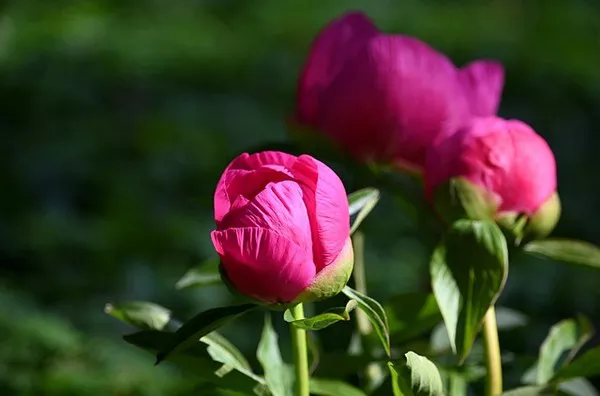In the vast realm of floral symbolism, where each blossom carries a unique significance, the peony stands as a majestic and revered figure. Renowned for its breathtaking beauty and rich cultural history, the peony flower transcends mere aesthetics to embody a spectrum of meanings that resonate deeply across various cultures and traditions. In this exploration, we delve into the profound symbolism and cultural significance of the peony, unraveling the layers of meaning that have adorned this regal bloom throughout the ages.
The Botanical Splendor of Peonies
Before delving into the symbolic realm, it is essential to appreciate the sheer botanical splendor of peonies. Belonging to the Paeoniaceae family, these perennial plants produce large, exquisite blooms characterized by lush, layered petals and a captivating fragrance. The diverse palette of colors, ranging from pristine whites and soft pinks to vibrant reds, further enhances the allure of the peony. These characteristics collectively contribute to the flower’s status as a symbol of opulence and prosperity.
Historical Roots: Peonies in Ancient Cultures
The rich history of the peony as a symbol is deeply rooted in ancient cultures, particularly in China, where it has been cultivated for over a thousand years. In Chinese tradition, the peony holds a revered place and is often referred to as the “king of flowers” or the “flower of riches and honor.” Its association with wealth and prosperity is reflected in various aspects of Chinese art, literature, and folklore.
In Chinese mythology, the peony is linked to the legendary goddess Queen Wu, who transformed into a peony to escape pursuit. This mythological connection has contributed to the flower’s association with feminine beauty and grace. The peony’s representation in Chinese art and poetry also underscores its role as a symbol of love, good fortune, and enduring beauty.
Symbolism in Eastern Cultures
Beyond China, the peony has traversed cultural boundaries to establish itself as a symbol of significance in various East Asian cultures. In Japan, the flower holds a dual significance, symbolizing both transience and honor. The fleeting nature of the peony’s bloom is likened to the ephemeral beauty of life, creating an association with the transient nature of existence in Japanese culture.
In Korea, peonies are cherished for their association with wealth and prosperity. They are often featured in traditional art, including paintings, textiles, and pottery, as symbols of good fortune and success. The peony’s prominence during celebrations and weddings in Korea further underscores its positive connotations.
Western Appreciation: Peonies in Victorian Symbolism
As the fascination with peonies spread to the Western world, particularly during the Victorian era, the flower took on new layers of symbolism. In the language of flowers, or floriography, which was popular during this period, peonies were associated with various sentiments. While the red peony symbolized passionate love, the white peony represented shame or embarrassment. This nuanced interpretation added depth to the exchange of flowers as a form of non-verbal communication during the Victorian era.
Modern Significance: Peonies in Contemporary Culture
In contemporary society, peonies continue to captivate hearts and minds, not only for their physical beauty but also for the enduring meanings they carry. The flower has become a popular choice for various occasions, including weddings and celebrations, where it symbolizes love, romance, and prosperity. The versatility of the peony’s symbolism allows it to be a fitting choice for a spectrum of emotions and sentiments.
Cultivating Peonies: A Personal and Global Pursuit
The cultivation of peonies extends beyond mere horticulture; it embodies a personal and global pursuit of beauty, meaning, and cultural connection. Gardening enthusiasts around the world seek to nurture these majestic blooms, not only for their aesthetic appeal but also for the stories they tell and the emotions they evoke.
In the realm of traditional Chinese medicine, peonies hold medicinal value, further elevating their significance. The roots, seeds, and petals are used in various formulations to address health issues and promote well-being. This dual role as both an ornamental and medicinal plant adds to the multi-faceted nature of the peony.
Conclusion
In conclusion, the peony flower transcends its botanical identity to become a living tapestry of cultural meanings and symbolism. From ancient Chinese mythology to Victorian floriography and contemporary celebrations, the peony has woven itself into the fabric of human expression. Its beauty is not just a feast for the eyes but a vessel for emotions, stories, and connections that traverse time and geography.
As we continue to appreciate the elegance of peonies in gardens, art, and ceremonies, let us reflect on the profound meanings they carry. The peony, with its regal presence and rich symbolism, invites us to explore the depths of cultural heritage, celebrate the fleeting beauty of life, and embrace the enduring sentiments that connect us across borders and generations.


